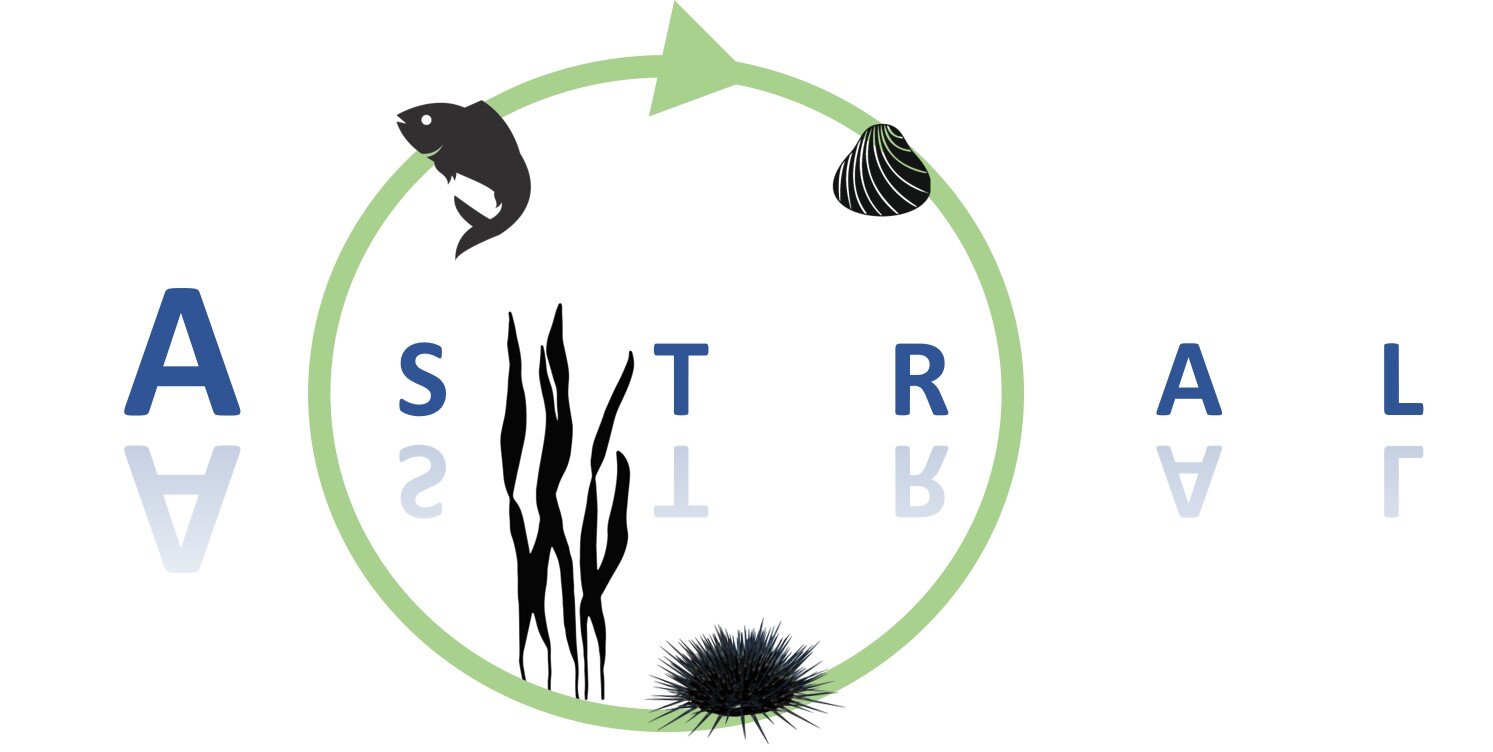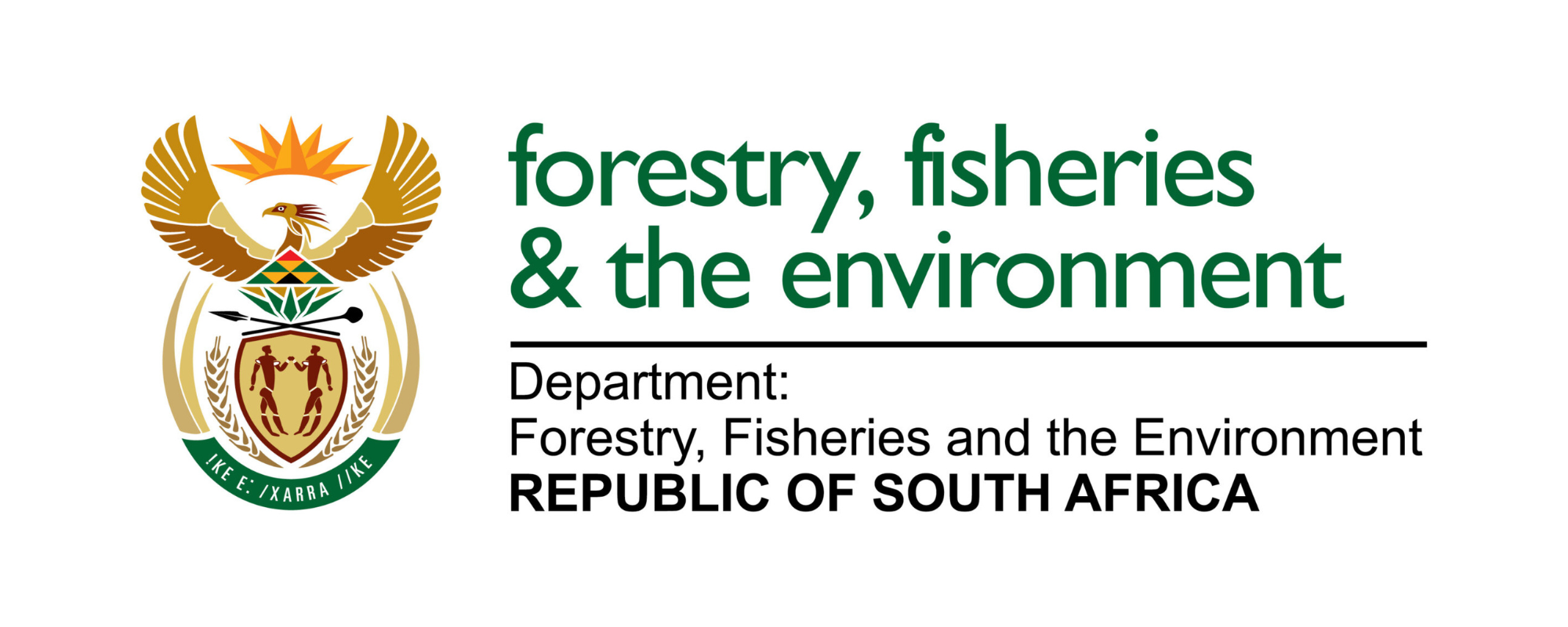IMTA Lab South Africa
University of Cape TownDepartment of Forestry, Fisheries and the EnvironmentViking Aquaculture (Buffeljags abalone farm)Location of sites: Research is carried out at two sites:
DFFE marine aquaculture research aquarium - Sea Point near the city of Cape Town (33° 55' 6.492'' S, 18° 22' 52.572'' E).
Buffeljags abalone farm - a stretch of coastline near the remote settlement of Buffeljags on the Cape south coast (34°45’14.7“ S 19°36’51.9” E)
Species:
South African abalone (Haliotis midae)
Sea lettuce (Ulva lacinulata)
Collector sea urchin (Tripneustes gratilla)
Cape urchin (Parechinus angulosus)
IMTA Lab South Africa has defined the ASTRAL value chain for the land-based pump ashore system as follows:
Fed species
South African abalone (perlemoen),
Haliotis midae,
Tropical sea urchin, Tripneustes gratilla.
These species release waste / nutrients into the surrounding water.
Extractive species
Seaweed, Ulva lacinulata
This species absorbs dissolved minerals and carbon - reusing the waste from the shellfish entering the environment.
Novel species
Tropical sea urchin, Tripneustes gratilla,
They are fed with seaweeds grown in the IMTA process enhancing circularity; and the
Temperate sea urchin, Parechinus angulosus,
They are fed with seaweeds and their faecal material is used as supplementary feed/probiotic for juvenile abalone, Haliotis midae, improving abalone growth/health and enhancing circularity.



Description of IMTA process:
Abalone are grown on land in raceway tanks. Ulva is grown in the abalone effluent in large paddle raceways, and the Ulva is used as additional feed, and 50% of the water from the Ulva systems is re-circulated back to the abalone tanks. The Ulva removes nitrogen (as ammonia) excreted by the abalone, enabling partial re-circulation, and there are two circular processes: nitrogen and water. Higher recirculation rates move closer to Zero Waste. This IMTA process will be adapted for the production of a new high-value species, Tripneustes gratilla.
Main research questions:
The overall objective is to develop and validate cost-effective IMTA in land-based pump ashore systems. The physical and chemical parameters of the abalone-Ulva IMTA systems will be monitored, including the microbial community to provide critical information on biosecurity, species health and system health, and culture technology for the production of a new high-value species, the sea urchin Tripneustes gratilla, in IMTA systems will be carried out. Potential for the production of additional value-added products from the IMTA will be investigated, particularly the use of effluent-grown Ulva as a supplementary feed or feed additive to enhance the growth, health, product quality and sustainability of cultured abalone and sea urchin. The use of faecal matter from the sea urchin Parechinus angulosus as a feed/probiotic for juvenile abalone will also be investigated.
Research questions for Abalone-Ulva IMTA systems:
Is there a biosecurity risk associated with IMTA systems?
Are the physical and chemical parameters of the IMTA optimal for the health and growth of the cultivated species?
Can the faecal matter from the Cape Sea urchin Parechinus angulosus serve as a feed/ probiotic for juvenile abalone?
Is it possible to increase recirculation rates (≥75%) without compromising the health, growth and microbiome of the cultivated species?
Research questions for Urchin-Ulva IMTA systems:
What are the optimal physical and chemical parameters of the IMTA?
What is the optimal system design for an urchin-Ulva IMTA system in the temperate environment of the Western Cape province of South Africa?
What is the bioremediation capacity of Ulva in this system and are there sufficient nutrients generated from the urchin raceways?
Which substrates promote optimal settlement of Tripneustes gratilla larvae?
Other Research Questions:
What is the species of Ulva cultivated in IMTA in South Africa and on other ASTRAL IMTA sites?
What are the factors controlling the reproduction of the seaweed?
Is there potential for the production of additional value-added products from the IMTA (e.g. Ulva or components of Ulva as feed additives, settlement cues or antimicrobials)?
How closely can the systems approach ‘zero waste’ while maintaining system and economic sustainability?




